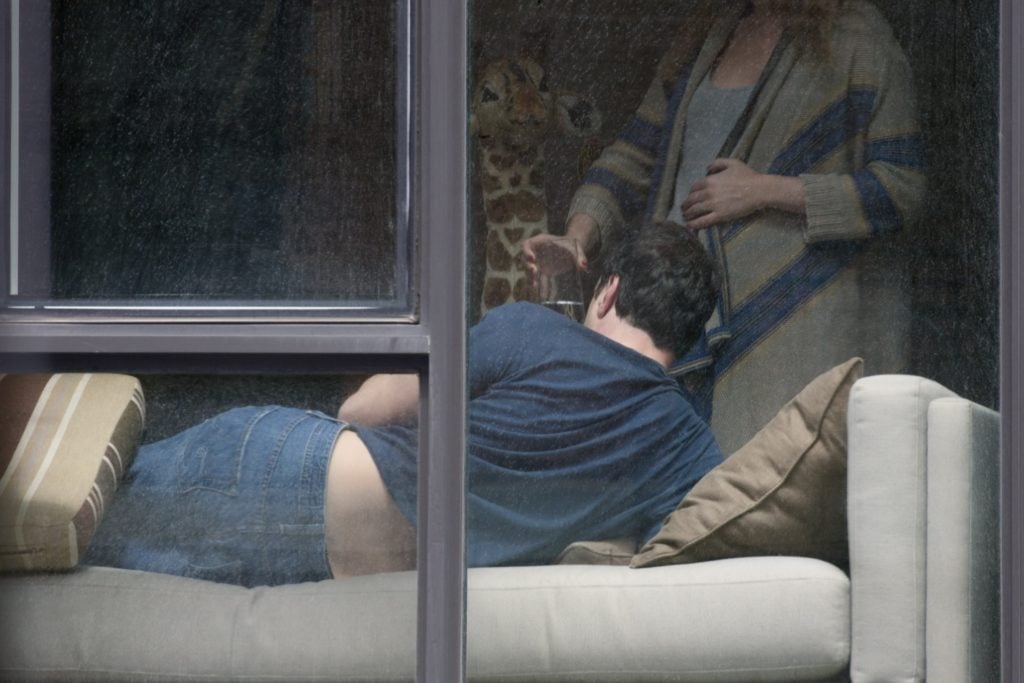Galleries
Voyeuristic Photographer Arne Svenson Wins New York Appellate Court Case
Should New York revise its privacy laws?

Should New York revise its privacy laws?

Hili Perlson


Arne Svenson, from his series “The Neighbors” (2012)
Photo via: arnesvenson.com
A ruling of the Appellate Division, First Department, of New York State Supreme Court, in favor of photographer Arne Svenson brings troubling news for privacy advocates (already distraught by Edward Snowden’s Smashed Laptop Displayed at the V&A).
When Svenson’s show “The Neighbors” opened at Julie Saul Gallery in 2013, it was met with outrage, followed by legal action.
Svenson had been taking pictures of New York residents inside their lower Manhattan apartments with a telephoto lens, and without their consent, thus confirming one of the biggest fears New Yorkers have concerning their privacy.
After seeing the photographs published in an article in the Tribeca Citizen, a neighborhood weekly, in the lead up to the gallery show, a couple of the subjects seen in the photographs, Matthew and Martha G. Foster, originally filed a complaint in New York Supreme Court in May 2013 on behalf of themselves and their minor children James and Delaney Foster claiming that Svenson had photographed them and their children without their consent, resulting on images including one that showed Martha Foster holding her son James (in a diaper), with her daughter Delaney (wearing a bathing suit) standing beside her. The plaintiffs argued in the complaint that they were “frightened and angered by defendant’s utter disregard for their privacy and the privacy of their children,” and furthermore that the photographs were used for commercial purposes, to promote an exhibition where they would be put up for sale and were also on sale online, and thus constituted advertising and trade.
In August 2013, the Supreme Court ruled in favor of Svenson on the grounds that the photographs were protected under the First Amendment “in the form of art.” In September that year, the plaintiffs appealed.
Art over Privacy
In the decision of the Appellate Division, Dianne T. Renwick, writing for the court recognized that the people in the photographs had no idea they were being photographed and recognized the limitations of New York’s statutory privacy law in redressing this kind of “technological home invasion and exposure of private life.” However, ultimately, the kind of “invasion of privacy” that happened in this situation is not not actionable because Svenson’s use of the subject images “constituted art work” and, therefore were not considered “use for advertising or trade purposes” under the relevant statute.
The Appellate Division affirmed the order of the Supreme Court. Justice Renwick wrote that “however disturbing” Svenson’s conduct may be, by publishing the photographs as works of art, “without any further action toward plaintiffs,” there was no viable claim for “violation of the statutory right to privacy.”

Arne Svenson, from his series “The Neighbors” (2012)
Photo via: arnesvenson.com
Children’s Photos Were Reproduced in the Media
According to the New Yorker, the artist consulted with a lawyer and reportedly watched Alfred Hitchcock’s Rear Window several times before “spying” on his neighbors. For over a year, he took thousands of shots.
The photographic series shows New York residents going about their everyday lives: they are depicted at the breakfast table, doing household work, or watching TV.
Some pictures, however, like those taken of Matthew and Martha Foster and their children, show young children, like the work described as “little girl, dancing in her tiara; half naked.”
“The Neighbors” is slated to go on view at the Museum of Contemporary Art in Denver, in February 2016.
Correction: This article incorrectly stated that the decision of April 9, 2015 was made by New York Supreme Court. The decision was of the Appellate Division of the Supreme Court, First Department.